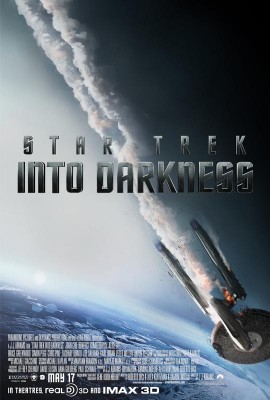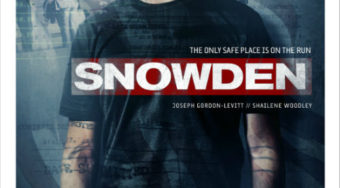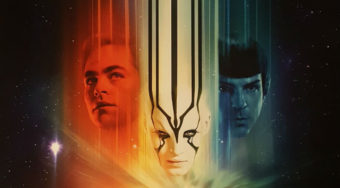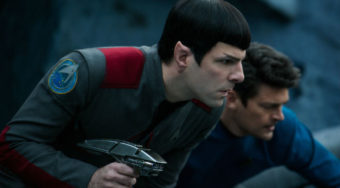Film Reviews

Star Trek Into Darkness
Genre: Action and Adventure, Science Fiction
Director: J.J. Abrams
Cast: Chris Pine, Zachary Quinto, Zoe Saldana, Karl Urban, Simon Pegg, Anton Yelchin, John Cho, Bruce Greenwood, Benedict Cumberbatch, Peter Weller
MPAA-Rating: PG-13
Release Date: May 15th 2013
J.J. Abrams’ first Star Trek (2009) brought the beloved characters back to the big screen, where they delighted fans and critics alike. With its sequel Star Trek Into Darkness, a better villain emerges but is accompanied by an unmistakable complacency in the story itself. Despite the latter flaw (that becomes more obvious in the film’s latter half), the film is still a fun and ultimately satisfying experience.
The story picks up with Captain Kirk (Chris Pine)—as usual— finding himself breaking the rules and disregarding his primary objectives. When his ally and first officer Spock (Zachary Quinto) is left in a dire situation early on, Kirk bends the rules to save him but soon faces the consequences. He faces the dreadful thoughtful of losing both the Enterprise and losing his position as its captain. But fate intervenes and soon enough, the rebellious Kirk is facing down a much stronger enemy than the rulebook when a terrorist named John Sullivan (Benedict Cumberbatch) helps bomb a Starfleet facility.
The characters here show off the same personality traits that were so prominent in this film’s predecessor. Kirk is still the mischievous ladies’ man who always finds a way out of trouble while Spock is his cool-headed sidekick. While Kirk is driven by impulses, Spock is driven by logic and order. That combination has served them well over the years and it’s on full display here, especially as the two banter with each other throughout the proceedings.
What is missing from the story though is the sense of auspiciousness, originality and fun that was so prevalent in the original Abrams flick. A supporting character like Chekov (Anton Yelchin) is a minor character in both films but in Star Trek, he was given a chance to shine onscreen. In this sequel though, he has an important role in the plot but his character never has the opportunity to steal scenes like he once did.
This story’s deepest flaw may be that character development is often sacrificed in order to inject more action or exposition into the proceedings. It’s true that some of the major characters—especially Spock here— are given an arc to follow but that feels only superficially satisfying. When he has reached the end of that arc, the conclusion is more cheesy than it is heartfelt.
Overall, Sullivan leads the story as the characters chase him around not knowing what he’s planning (or whose side he’s actually on). But even as they play cat-and-mouse with him, the film offers up stereotypical scenes that make the story less fresh and exciting. For instance, some of these sequences will seem familiar to moviegoers who have been to the movies over the last few years. After Sullivan is located for instance, he allows himself to be easily captured like the Joker in the Dark Knight (2008) or Loki in The Avengers (2012). Sullivan is then encased in a glass prison like Loki or Silva in Skyfall (2012). When such scenes occur, they feel a bit tired. As if there’s now a playbook for blockbuster films like this and that the style must be followed as closely as possible.
That isn’t to say that “Star Trek” isn’t an engaging and energetic film. It’s far from it. It is entertaining, occasionally humorous and features some memorable action sequences that will likely please Star Trek fans. Abrams has created a vivid world once again but it’s not as memorable as it once was.
Review by: John Hanlon












